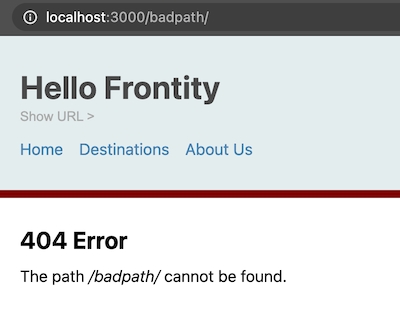Add a 404 page
And now we come to a nice easy step. All we need to do here is create a component to inform the user that the page can't be found and then use it in our <Root> component.
First create a new file in the components directory. Call it error.js and put this code in the file:
// File: /packages/my-first-theme/src/components/error.js
import React from "react"
import { connect } from "frontity"
const Error = ({ state }) => {
return (
<>
<h2>404 Error</h2>
<p>
The path <em>{state.router.link}</em> cannot be found.
</p>
</>
)
}
export default connect(Error)It's not really necessary to connect the component to the state if you just want to display a simple error message, but here we want to show the path that resulted in the 404 error.
It remains for us to use it in our <Root> component. First we import the <Error> component, then we add it as the last item in our <Switch> component which selects what component to use depending on the first matching condition.
And that's it! As we said earlier, this was a nice easy step. Now if you try navigating to a path that doesn't exist the <Error> component will display informing the user of the error.

Check you're on the right track by comparing your changes with the ones in this commit.
Last updated